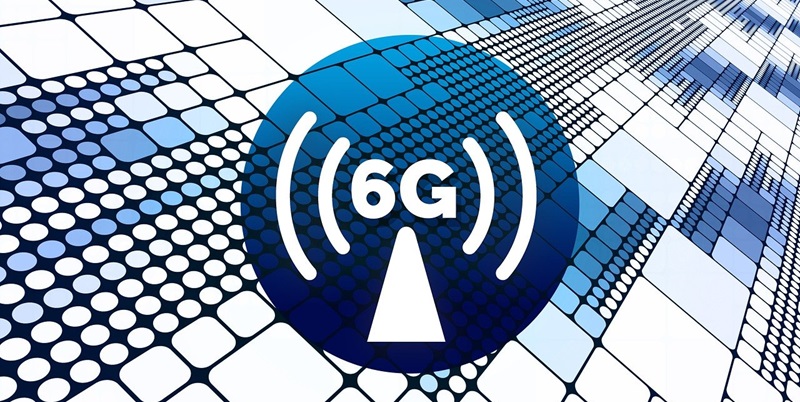The technological horizon is buzzing with anticipation as the 6G revolution stands poised on the brink of transforming global communications and industries far beyond the reaches of its predecessor, 5G. While the world is still in the midst of integrating 5G technology, an exciting journey towards a futuristic 6G landscape is already underway. This next-generation network promises data rates approaching 1 terabyte per second, enabling instant downloads and seamless experiences in augmented and virtual realities. As it introduces a new era of connectivity, questions about readiness for such technology, its potential impact, and the challenges involved loom large.
The Promise of 6G
Unprecedented Speed and Connectivity
One of the most striking promises of 6G technology is its staggering speed, potentially up to 100 times faster than current 5G networks. This upgrade in bandwidth and latency could make instantaneous downloads and ultra-high-definition video streaming a common reality. The vision extends beyond mobile internet; it encompasses a transformative impact on industries such as healthcare, education, and entertainment, where real-time data transmission is crucial. Surgeons might perform procedures using robotic arms controlled remotely with zero lag, while students could attend virtual classrooms with holographic teachers.
Additionally, 6G aims to provide seamless integration with advanced technologies like artificial intelligence (AI) and edge computing. This would lead to a new generation of devices that are not just smart but incredibly intuitive and responsive. Imagine personal assistants that predict your needs before you even express them, based on real-time data analytics and sophisticated machine learning algorithms. However, this leap in connectivity and device capability introduces complex challenges, particularly in the realms of infrastructure upgrades and energy consumption.
Holographic Communication and AI-Enhanced Edge Computing
Beyond rapid speed and seamless connectivity, 6G is expected to incorporate holographic communication into everyday use. The creation of highly detailed, three-dimensional representations transmitted in real-time could revolutionize communication in personal and professional settings. Picture attending a business meeting where participants around the globe project holographic images, facilitating a more genuine and interactive experience.
Moreover, the integration of AI into edge computing enhances the real-time processing capacity of devices, ensuring faster and more efficient data handling. This removes the necessity for data to travel long distances to central servers, reducing latency and improving response times. As everyday objects—from home appliances to industrial machines—become interconnected and capable of autonomous decision-making, issues of privacy and security become even more pressing. Ensuring these intelligent systems operate securely and effectively necessitates robust cybersecurity frameworks.
Challenges to Overcome
Infrastructure and Energy Demands
The transition from 5G to 6G will require significant upgrades to existing infrastructure, posing a considerable financial and logistical challenge. Unlike the incremental improvements seen in previous generations, the leap to 6G demands new hardware capable of supporting its high-frequency signals and extensive bandwidth. This infrastructure revamp includes the deployment of countless small cells, antennas, and advanced base stations to ensure consistent and widespread coverage.
But the physical upgrades are just one piece of the puzzle; managing the surging energy demands is another. The proliferation of connected devices and constant data transmission significantly increases power consumption, raising concerns about environmental sustainability. The industry must explore alternative, energy-efficient technologies and invest in renewable energy sources to mitigate these impacts. Sustainable deployment practices and energy-conscious designs could play a critical role in balancing technological advancements with ecological responsibility.
Regulatory and Security Concerns
As with any revolutionary technology, the rollout of 6G comes with its own set of regulatory hurdles and security issues. The International Telecommunication Union and other regulatory bodies will play a pivotal role in overseeing the responsible deployment of this technology. These entities must establish standards that ensure the safe and equitable integration of 6G while maintaining fair competition among telecom operators.
With faster speeds and increased connectivity come heightened risks of cyber threats. The massive volume of data transmitted across 6G networks could be a goldmine for malicious actors if adequate security measures aren’t implemented. Developing robust cybersecurity frameworks that protect sensitive information is paramount. Beyond technical solutions, user awareness and education about cybersecurity best practices will be crucial in maintaining the integrity of these advanced networks.
The Societal and Environmental Impact
Equity and the Digital Divide
The arrival of 6G technology holds the potential to either bridge or further widen the digital divide that exists globally. While developed nations might quickly adapt and capitalize on this technological leap, developing regions could struggle with the high costs associated with adopting 6G infrastructure. The risk of exacerbating economic disparities is real, as communities without access to these advancements might miss out on the opportunities that such connectivity could provide.
To address this, strategic investments and international collaborations are needed to ensure equitable access to 6G technology. Governments, private enterprises, and global organizations must work together to deploy infrastructure in underdeveloped areas. Fostering inclusivity in digital growth can promote global parity and ensure that the benefits of 6G are universally enjoyed. Inclusive policy-making and targeted funding could be instrumental in bridging this divide.
Environmental Sustainability
The technological world is abuzz with excitement as the dawn of the 6G era promises to revolutionize global communications and industries far beyond what its predecessor, 5G, offered. While we are in the midst of fully integrating 5G, the journey toward a futuristic 6G landscape has already begun. This next-generation network is expected to deliver data rates close to 1 terabyte per second, facilitating instant downloads and providing immersive experiences in augmented and virtual realities. As this new era of connectivity approaches, critical questions regarding our preparedness for such advanced technology, its potential impacts, and the challenges we may face come to the forefront. What will be the implications for industries such as healthcare, transportation, and entertainment? Will our current infrastructure be able to support this monumental leap, or will significant investments and upgrades be required? The shift to 6G is not just about faster internet; it represents a fundamental change that could reshape the way we live, work, and interact with the world around us.

